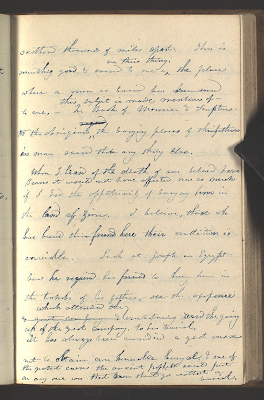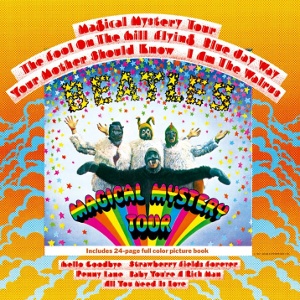Today he made a post titled “The Cognitive Dissonance Cluster Bomb.” He points out that CNN.com listed 24 different theories for why Trump won the election. He asks, “What does it tell you when there are 24 different explanations for a thing?”
He answers: “It tell you that someone just dropped a cognitive dissonance cluster bomb on the public. Head exploded. Cognitive dissonance set in. Weird theories came out. This is the cleanest and clearest example of cognitive dissonance you will ever see.”
I agree with him. His analysis has been awesome all year.
But there’s another tremendous example of cognitive dissonance Adams is unaware of, because it’s confined to a dozen or so LDS scholars who keep insisting the Book of Mormon took place in Mesoamerica.
___________________
To paraphrase (and partially quote) Adams, here’s what we’re seeing in the LDS academic community:
1. They believe they are smart and well-informed.
2. Their good judgment (based on their PhD-level education) told them the Book of Mormon took place in Mesoamerica, which means the Hill Cumorah must be in southern Mexico.
3. Most members of the Church–and every prophet and apostle who has spoken on the issue–believe the Hill Cumorah is in New York anyway.
Those “facts” can’t be reconciled in the minds of the Mesoamerican scholars. Mentally, something has to give. That’s where cognitive dissonance comes in.
There are two ways for Mesoamerican advocates to interpret that reality. One option is to accept that if so many members (and the prophets and apostles) believe Cumorah is in New York, perhaps it is. But that would conflict with the scholars’ self-image as being smart and well-informed in the first place. When you violate a person’s self-image, it triggers cognitive dissonance to explain-away the discrepancy.
So how do you explain-away a New York Cumorah if you think you are smart and you think you are well-informed and you think Cumorah is OBVIOUSLY in Mexico?
You solve for that incongruity by hallucinating – literally – that the New York Cumorah people KNOW the idea is a false tradition and that they PREFER the false tradition because they are anti-science and anti-academia.
And this is exactly how the Mesoamerican scholars and educators handle their cognitive dissonance.
In a rational world it would be obvious that New York Cumorah supporters include lots of brilliant and well-informed people. That fact – as obvious as it would seem – is invisible to the folks [the Meso-promoting LDS scholars and educators] who can’t even imagine a world in which their powers of perception could be so wrong. To reconcile their world, they have to imagine that all New York Cumorah supporters are defective in some moral or cognitive way, or both.
We all live in our own movies inside our heads.
[Adams thinks “humans did not evolve with the capability to understand their reality because it was not important to survival. Any illusion that keeps us alive long enough to procreate is good enough.” I don’t see this as a matter of evolution, but apparently many LDS scholars do. I think it’s just another example of how the natural man is an enemy to God; i.e., when we pretend to seek the truth by rejecting the prophets, we’re doomed to maintaining the illusion that the movie inside our heads is “reality” in some way.]
That’s why the LDS scholars live in a movie in which they are fighting against a monster called “The false tradition that Cumorah is in New York” but you live in a movie where the New York Cumorah explains the Book of Mormon so well. You live in a movie in which the prophets and apostles are reliable and credible. The Mesoamerican advocates live in a movie in which the prophets and apostles are speculating and don’t know what they’re talking about. Same planet, different realities.
_____________
Look at the explanations the Mesoamerican advocates give to solve their cognitive dissonance:
1. Joseph and Oliver were merely speculating in Letter VII; i.e., they lied when they said it was a fact.
2. Before his death, Joseph changed his mind about Book of Mormon geography; i.e., he wrote or endorsed the Times and Seasons articles.
3. Moroni never told Joseph the hill was named Cumorah; i.e., Joseph’s mother misremembered or lied about that.
4. Joseph and Oliver never went to the records repository in the hill; i.e., Brigham Young and others lied about that, or Joseph and Oliver were relating a vision of a hill in Mexico.
5. David Whitmer did not hear a divine messenger refer to Cumorah; he misremembered or lied about that.
6. The hill in New York doesn’t match the description in the text; i.e., there are no volcanoes in New York.
7. The hill in New York is too far from Mesoamerica; i.e., we know the Book of Mormon took place in Mesoamerica, so it is “manifestly absurd” for anyone to believe Cumorah is in New York.
8. The prophets and apostles who personally knew Joseph Smith were fooled by a false tradition; i.e., like Joseph, they embraced a false tradition about the New York hill that was started early on by an unknown person.
9. The prophets and apostles who lived after Joseph’s contemporaries died off were also fooled by a false tradition; i.e., Joseph Fielding Smith, Marion G. Romney, and others didn’t know what they were talking about.
10. There is no archaeological support for the New York setting; i.e., it is a “clean hill” with no artifacts.
11. Only experts trained in the field (trained in the ministry) can be trusted; i.e., if you don’t have a PhD, you can’t be expected to understand why the prophets and apostles are wrong.
I could go on, but you get the idea. I’ve addressed every one of these Mesomania arguments. Not a single one of them holds up.
The situation has boiled down to this:
LDS scholars and educators are in a state of serious cognitive dissonance that they refuse to acknowledge. They assert their credentials and years of study and their groupthink as reasons for people to believe them. In many cases, they have pursued careers motivated by Mesomania. They have obtained grants in the millions of dollars based on Mesomania. They have trained generations of LDS scholars and educators to think alike.
But fortunately, because of the Internet, their academic monopoly is cracking.
People are smarter than the LDS scholars think.
We can see through their tactics and their sophistry when we simply accept what the prophets and apostles have taught from the beginning about the Hill Cumorah.
________________
Just to be clear, acceptance of the New York Cumorah does not resolve the questions about Book of Mormon geography overall. That geography has not been officially revealed, and the Church wisely remains neutral on that topic (just as the Church is neutral on where the real Mount Sinai is).
There are two groups of people who work on Book of Mormon geography.
1. Those who put Cumorah in New York.
2. Those who put Cumorah somewhere other than in New York.
Within each category there are plenty of variations.
Group 1: Scholars, educators, members, and anyone else can use their knowledge and reasoning to develop their own theories of Book of Mormon geography, consistent with the New York Hill Cumorah. This can range from a model limited to the State of New York all the way to a hemispheric model.
Group 2: People can also continue to promote their ideas about Cumorah outside of New York. But everyone in this group deals with the cognitive dissonance this post discusses. You’ll see it in everything they write.







